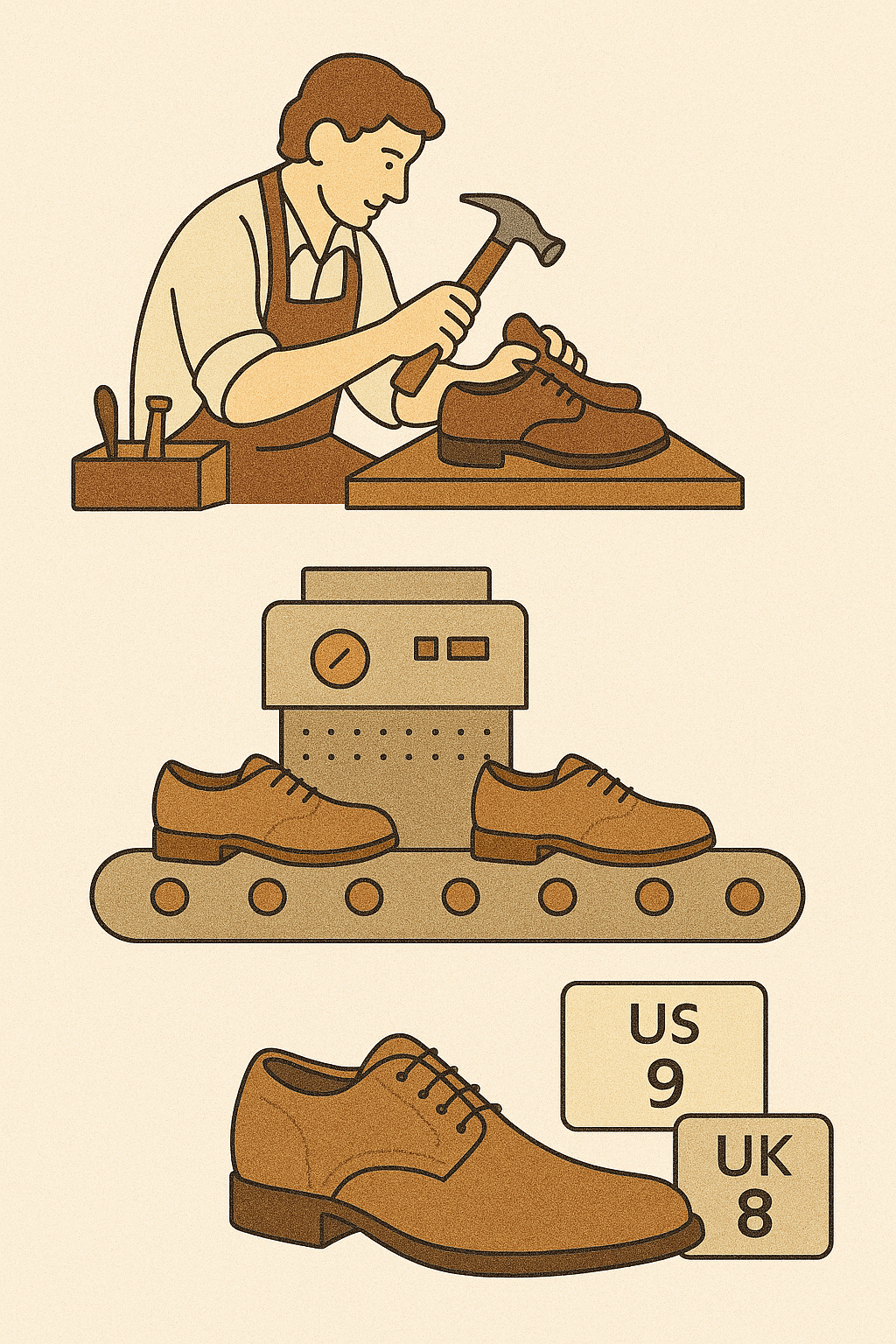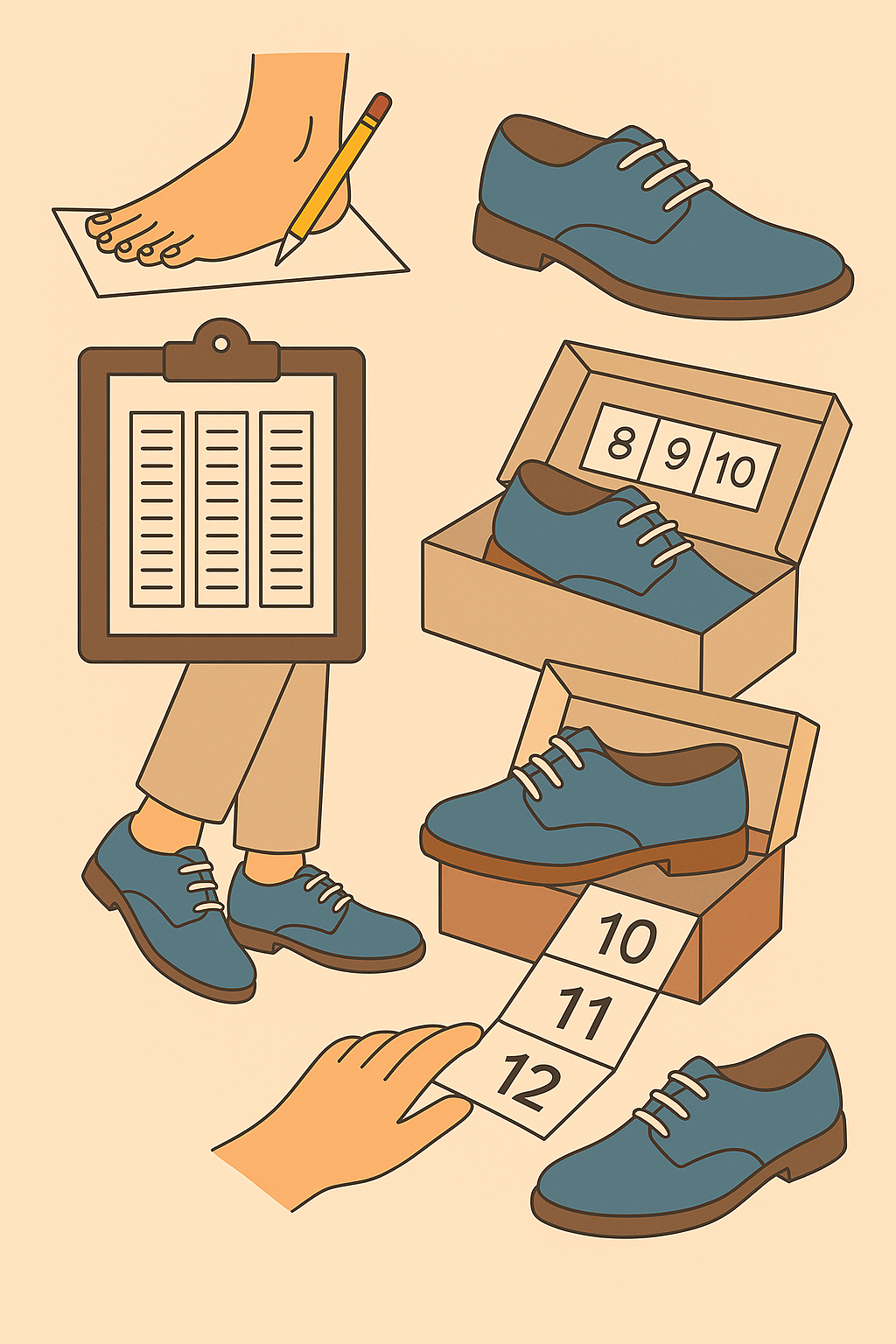Why do shoe sizes change from country to country? A brief guide (and how to find your way)
The origins of sizes: a bit of history
Just over a century ago, shoes were far from standardized: they were custom-made directly on the customer’s foot by skilled artisans. There was no real sizing system, because each pair of shoes was unique.
With the Industrial Revolution and the rise of mass production, it became necessary to develop a system that allowed shoes to be produced in bulk, making both customer selection and distribution easier for manufacturers.
That’s how the first sizing systems were born. Unfortunately, each country developed its own, based on different units of measurement and unique criteria.

Different measurement systems around the world
In the United Kingdom, for example, sizes are based on an unusual unit: the barleycorn. Each size differs from the next by about one-third of an inch.
In France and Italy, the Paris Point system is used, where one point equals two-thirds of a centimeter. This is the most common system in Europe and is also used in Italy.
In the United States, the system is a variation of the British one, but with different numbering: for instance, the same length might correspond to different sizes for men and women (typically, women’s shoes are about 1.5 sizes higher than the men’s equivalent).
In Japan, the system is much simpler: the size directly corresponds to foot length in centimeters, making it more intuitive. However, this system is not widely used in Europe.
There are also lesser-known systems, such as Mondopoint, used in military and sports contexts, which precisely measures both foot length and width in millimeters. It’s very accurate but not commonly used in retail.
How to find your way and choose the right size
1. Measure your foot:
Place your bare foot on a sheet of paper, trace around it, and measure the length from the heel to the tip of your longest toe. Repeat the process for both feet—there might be a slight difference.
2. Check the conversion chart:
Before buying, especially online, review the brand’s size guide. Every brand can vary slightly, so don’t rely solely on the label.
3. Consider the shoe shape:
Many models fit differently. Check whether they run narrow or wide, especially if your foot is particularly slim or broad.
4. Walk in them:
If you're in a store, don’t just try them on while standing still—take a few steps to really feel if they’re comfortable.
5. Mind the half sizes:
If you’re unsure between two sizes, consider going up half a size, especially if you wear thick socks or the shoe is stiff.

Fun facts about shoe sizes
Until the 19th century, shoes were made without distinguishing between left and right feet—they were symmetrical and could be worn on either foot. Only with the advent of industrial production did shoes begin to be shaped specifically for each side, greatly improving comfort and fit.
Another fun fact involves shoes made for global markets. It's common to find labels showing multiple sizes side by side—EU, US, UK, JP—because each country uses its own system. This helps with international shopping, although the conversions aren't always exact, as each brand may vary slightly.
Moreover, manufacturers often adapt shoe shapes depending on the destination market: the same sneaker model might be wider for North America and narrower for Asia, reflecting average foot shapes in those regions.
In conclusion
Shoe sizes are the result of a long evolution and very different approaches across cultures and markets. Even though a universal system doesn't yet exist, with a little extra attention—and maybe some expert advice—finding the right shoes is always possible.
At Guidi Calzature, we’re happy to help you choose the right model, explain size and fit differences, and guide you step by step toward comfort and style. Always on the right foot.
 Deutsch
Deutsch  Español
Español  Français
Français  Italiano
Italiano 



